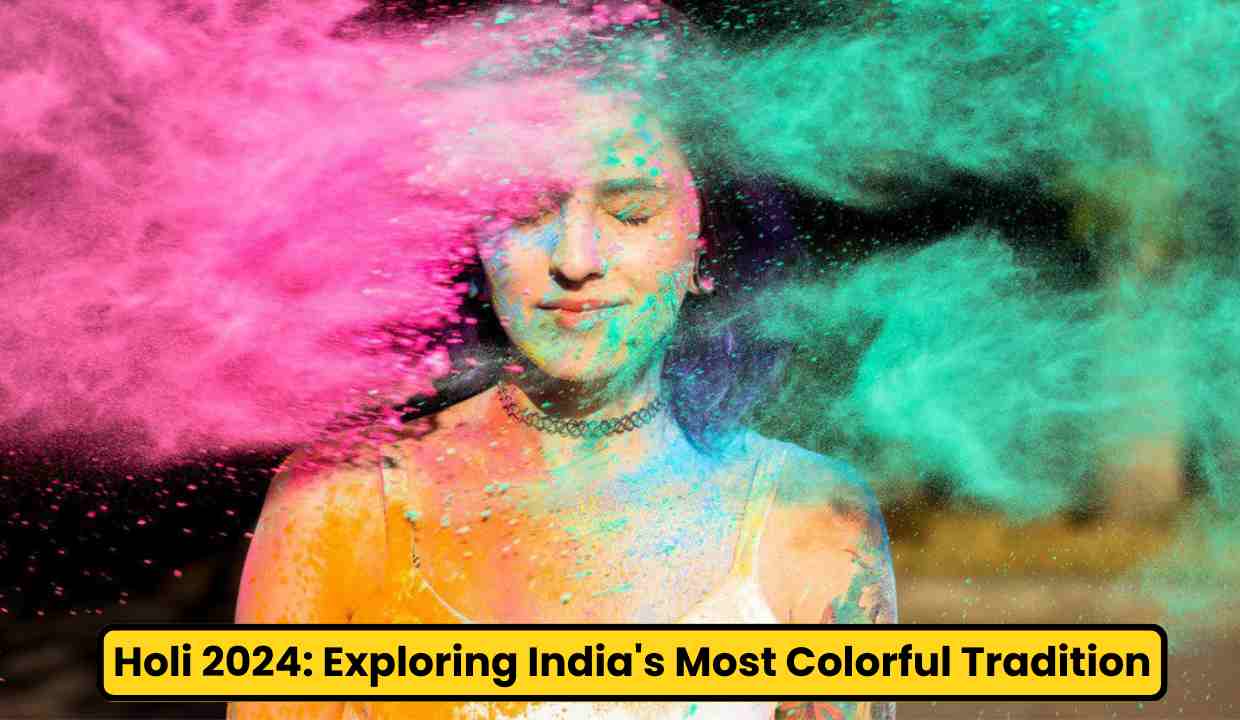Holi 2024: India’s famous festival of colors, Holi, is a spectacle that transcends boundaries, mesmerizing the hearts and minds with its vibrant colors and infectious energy. Rooted in Hindu tradition, this annual festival marks the arrival of spring and the victory of good over evil. As red, emerald, and saffron clouds adorn the sky, people from all over India and beyond come together to participate in this joyous occasion. In this article, we explore the essence of Holi, its customs, legends, global reach, and cultural significance.
Holi 2024 Beginning of the festival
Holi, also known as the “Festival of Colors”, begins on the evening of the full moon during the month of Phalgun of the Hindu calendar, which usually falls in February or March. The festivities begin with Holika Dahan, a ritual bonfire where people gather to sing, dance, and symbolically drive away evil. The lighting of bonfires celebrates the victory of good over evil, echoing the ancient legend of Holika, a mythical demon.
Splendor of colors

At the heart of Holi is the playful exchange of colored powder, known as Gulaal, which fills the air with a kaleidoscope of colors. This tradition has its origins in Hindu mythology, where Lord Krishna playfully throws colors on his beloved Radha, symbolizing his divine love. Today, the vibrant colors of Holi serve as a testament to unity and inclusivity transcending religious and social barriers.
A festival for all
Holi embraces inclusivity, welcoming participants from all walks of life, regardless of their religious or cultural background. The camaraderie and community ethos of the festival fosters bonds of friendship and goodwill, as people come together to celebrate the spirit of togetherness. From innocent passers-by to devout worshippers, everyone is fair game to be drenched in colored powder and laughter.
Culinary delights
Beyond the gaiety of coloured powders, Holi is a feast for the senses, offering an array of traditional dishes and drinks to tantalize the palate. From sweet dishes like Gujhiya and Dahi Vada to refreshing drinks like Thandai, the culinary offerings of Holi reflect the richness of Indian cuisine. For some people, the festivities are also accompanied by thandai made from bhang, which adds an extra layer of frolic to the festivities.
Diverse traditions across India

Holi celebrations vary in different regions of India, each adding its unique flavor to the celebration. In North India, where the legend of Krishna predominates, celebrations may last for a week, including lively processions and enthusiastic revelry. In Mathura, the birthplace of Krishna, locals reenact the mythology with playfulness, while in Odisha, grand processions and religious rituals take center stage.
Global outreach and cultural exchange
The popularity of Holi extends far beyond the borders of India, transcending geographical boundaries to enthrall audiences across the world. From the United States to Europe and beyond, the Indian diaspora celebrates Holi with gusto, spreading the festival’s message of joy and unity. The festival serves as a symbol of India’s rich cultural heritage, promoting inter-cultural understanding and appreciation.
Conclusion
In short, Holi captures the essence of India’s vibrant culture, celebrating the arrival of spring and the triumph of love and unity. Holi brings people together in a colorful tapestry of happiness and harmony. Be it the bustling streets of Delhi or the quiet villages of rural India, the spirit of Holi transcends boundaries, reminding us of the universal values of love, friendship, and harmony.
Also Read: Phoolwali Holi 2024: Vrindavan’s festival of colors and flowers, Know details



